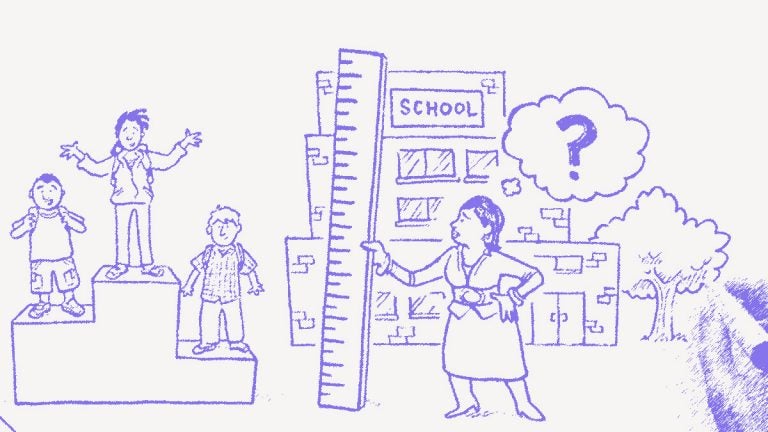N.J. releases checklist to meet Common Core and PARCC goals

(Image via Common Core explainer video on Vimeo)
What it is: The state Department of Education sent to districts at the end of the school year the “CCSS Implementation Curriculum Evaluation Tool” to ensure they would have language arts and math curricula that aligns with the Common Core State Standards and the coming PARCC exams. The checklist is only meant as a guide to districts, rather than a blueprint. “The tool is designed to guide self-assessment, reflection, review, and, if necessary, revision,” state assistant commissioner Tracey Severns in an accompanying memo.
What it means: The two documents are relatively easy-to-follow outlines for not just schools, but also teachers and families, to the kinds of changes that are being required to adapt to the Common Core and, more notably, the new Partnerships for Assessment of Readiness for College and Career (PARCC) exams.
What it doesn’t mean: The document comes out as the Common Core standards and the new PARCC testing continue to face intense debate in New Jersey. Bills remain pending in the Legislature that would delay the use of results from the new tests in teacher evaluations and other areas. But none of these affect the continued transition to the standards, or the start of PARCC testing in the spring of 2015.
Reading variety: The guidelines detail one of the key shifts of the new standards and tests, the mix of texts that students should be familiar with. For example, the curriculum in elementary schools (K-5th grade) should be a 50-50 mix of literary and informational text. It then shifts to more informational text in middle schools and a 30-70 mix between literary and informational by high school, including science and social studies.
Technology and research: Another example is the explicit standard that presses students to use technology to help in research. “Quality curricula aligned to the CCSS should contain numerous experiences for students using “multiple print and digital resources” to conduct “short as well as more sustained research projects.” This may include Internet research for gathering and using information, multimedia tools, and presentations, and online communications.
Differentiation of instruction: A central element of the new standards, and current teaching practice in general, is differentiating lessons for the varying skills and needs of students. The new checklist indicates that in developing plans for both thematic units of study and individual lessons special needs are to be emphasized. “In quality units of study, planning for special-needs populations should be infused throughout the curriculum, not as a ‘separate’ category,” the guidelines read.
WHYY is your source for fact-based, in-depth journalism and information. As a nonprofit organization, we rely on financial support from readers like you. Please give today.




